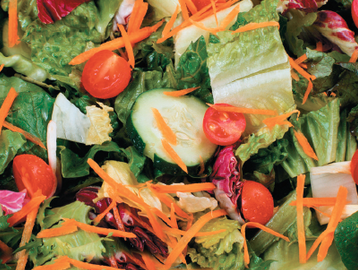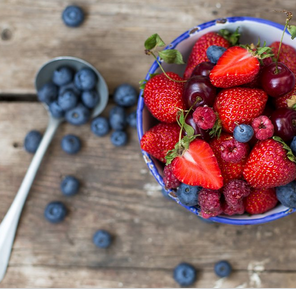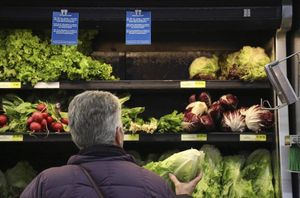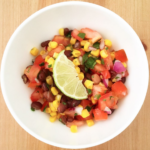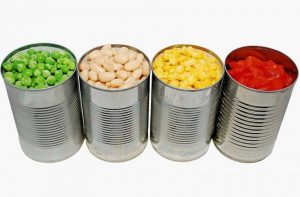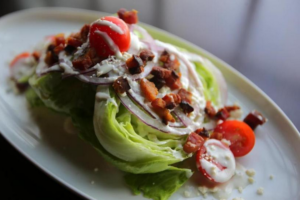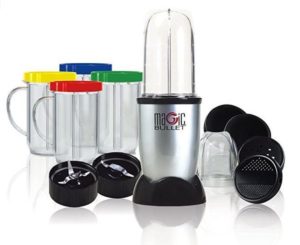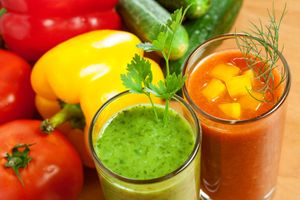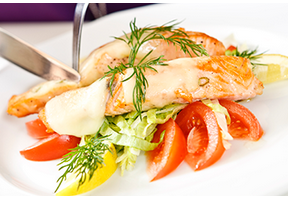 Photo Source: FDA
Photo Source: FDA
When folks ask me for a key diet change that will help them live a longer healthier life, the answer is simple. Eat more fish.
Research shows that consuming at least 8 ounces of fish weekly, especially omega-3 fatty acid-rich fish such as salmon, anchovies, and sardines, can reduce the risk of heart disease, the number one killer of Americans, and even help in lowering high blood pressure. When fish is on your dish, you are getting “two for the price of one” in the healthy diet department. You are not only enjoying those heart-healthy fats, but you are also displacing other sources of protein, such as fatty red meats, which can laden your plate with heart-unhealthy, saturated fat. A diet high in saturated fat can raise your blood cholesterol and increase your risk of heart disease.
Unfortunately, according to a study in the Journal of the Academy of Nutrition and Dietetics, Americans, on average, are eating only a measly four ounces of fish weekly. What’s one of the barriers? According to research in the journal, Appetite, it appears that one of the barriers holding people back from eating fish is that consumers don’t know how to quickly and easily prepare it.
My best tip for preparing salmon is to fire up the grill. I brush the salmon steaks with a tad of olive oil and sprinkle them with garlic powder, salt, and pepper. The rule of thumb for cooking fish is to grill it “10 minutes to the inch.” In other words, if the salmon is one inch thick, grill it for 5 minutes and then flip it over for another 5 minutes on the grill. I squeeze fresh lime juice over it before serving it. The cleanup is a snap.
Here are other quick and easy ways to get more fish in your diet from my Registered Dietitian Nutritionist (RDN) pals:
No Preparation
Keri Gans, author of The Small Change Diet and the creator of The Keri Report buys about a dozen cooked, chilled shrimp from her local grocer and garnishes them with a little cocktail sauce and adds a pre-made salad to the meal to meet her weekly fish quota. Gans enjoys this high protein dinner (3 grams of protein for each shrimp) without having to cook and mess up her kitchen.
Easy Preparation
For a high protein, healthy snack, Samantha Cassetty, nutrition and weight loss expert with a virtual counseling practice based in New York City, serves canned salmon on top of cucumber slices or a half red pepper. For dinner, she seasons the salmon with sesame oil and soy sauce and then stuffs it into an avocado half.
Abbie Gellman, a NYC-based chef and owner of Culinary Nutrition Cuisine, routinely adds a can of drained tuna to a bowl of cooked quinoa and chopped vegetables for a quick and healthy lunch. Gellman also uses canned salmon to make easy salmon cakes. She mixes a can of salmon with some bread crumbs, an egg, some herbs, and salt and pepper. She forms them into small patties, and cooks the cakes in a skillet with a little oil for approximately 3 minutes on each side.
A Little More Preparation, But Worth It
For a quick and easy way to incorporate fish into your diet, Toby Amidor, an award-winning nutrition expert and Wall Street Journal best-selling cookbook author, suggests using the “En Papillote” method, which is French for “in parchment” as the fish is baked in parchment paper. She combines coconut milk, lime zest, soy sauce, lime rounds, basil leaves, and shredded coconut in a sheet of parchment paper and tops these ingredients with flounder or cod filets. As the food bakes, steam is created, which cooks the food for an amazing dinner with little clean up.
Elizabeth Ward, the author of BetterIsTheNewPerfect.com slaps one pound of breaded cod, haddock, or other white fish fillets in a baking dish and covers the fillets with a can of undrained fire-roasted tomatoes, two tablespoons olive oil and 1 tablespoon dried or 2 tablespoons fresh parsley. After cooking in a preheated 400˚F oven for 18-20 minutes, she serves her Italian-themed dinner with some crusty whole grain bread and a green salad.
Cod fish tacos are a go-to dinner for culinary dietitian Marisa Moore. She seasons the cod with spices, such as chili powder and cumin, along with lime juice before sautéing or grilling the spicy fish. She then flakes the fish into soft corn tortillas and tops them with crunchy cabbage slaw, salsa, or avocado.
I hope these tips will help you meet your weekly fish quota and improve your diet.
This article originally appeared in U.S. News & World Report.
